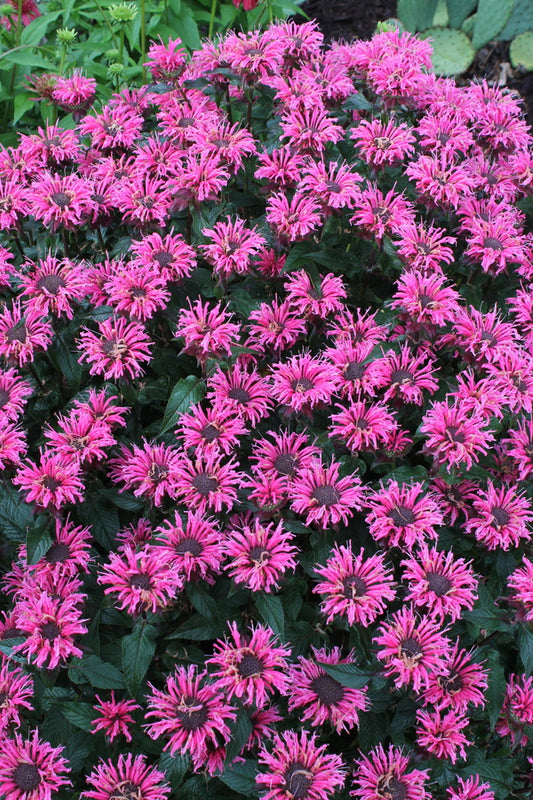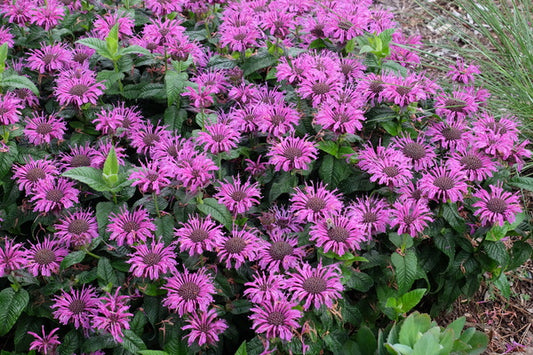Monarda flowers bloom in a variety of colors from white to pink, red, and purple. The flower heads are composed of small tubular flowers that appear in early summer and attract hummingbirds and butterflies.
-
Monarda 'Bubblegum Blast' PP 27,497
Item #: 11860
Zones: 4a to 8b, at least
Dormancy: Winter
Height: 24" tall
Culture: Sun
Origin: United States Hybrid
Pot Size: 3.5" pot (24 fl. oz/0.7 L)
Regular price $20.00Regular priceUnit price per -
Monarda 'Electric Neon Pink' PP 30,347
Item #: 13246
Zones: 4a to 8b, at least
Dormancy: Winter
Height: 24" tall
Culture: Sun
Origin: United States Hybrid
Pot Size: 3.5" pot (24 fl. oz/0.7 L)
Regular price $20.00Regular priceUnit price per -
Monarda 'Electric Neon Purple' PP 34,512
Item #: 17878
Zones: 4a to 8b, at least
Dormancy: Winter
Height: 24" tall
Culture: Sun
Origin: United States Hybrid
Pot Size: 3.5" pot (24 fl. oz/0.7 L)
Regular price $20.00Regular priceUnit price per -
Monarda 'Leading Lady Plum' PP 26,447
Item #: 13492
Zones: 4a to 8b, at least
Dormancy: Winter
Height: 12" tall
Culture: Sun
Origin: United States Hybrid
Pot Size: 3.5" pot (24 fl. oz/0.7 L)
Regular price $20.00Regular priceUnit price per
More Information About Monarda
The genus Monarda (Bee Balm) contains roughly 16 species of annual and perennial mint relatives that are endemic to North America. Native Americans used monarda as an antiseptic and, because of the strong mint/oregano flavor and pleasant bergamot orange scent of the leaves, brewed it as tea.
The unusual monarda flowers bloom in a variety of colors from white to pink, red, and purple. The round flower heads are composed of clusters of small tubular flowers that appear from early summer onward and attract hummingbirds and butterflies.
Monarda is a tough perennial wildflower, but can suffer from powdery mildew. Many named cultivars (e.g., Monarda 'Peter's Purple) have been selected for improved disease resistance and should be sought out over less resistant varieties. Some monarda plants spread readily via rhizomes and others form nice dense clumps in just a few years...we've selected the latter.
Bee Balm Growing Tips
Bee balm will do best in full sun and moist, well-drained soil. Good air circulation is important to hold back powdery mildew, so don't overcrowd. Divide regularly to improve air flow between the stems.






